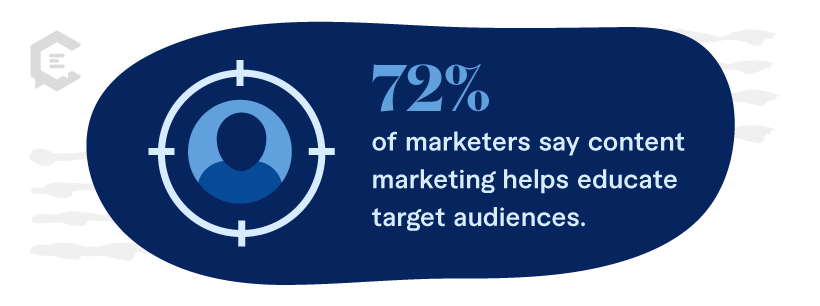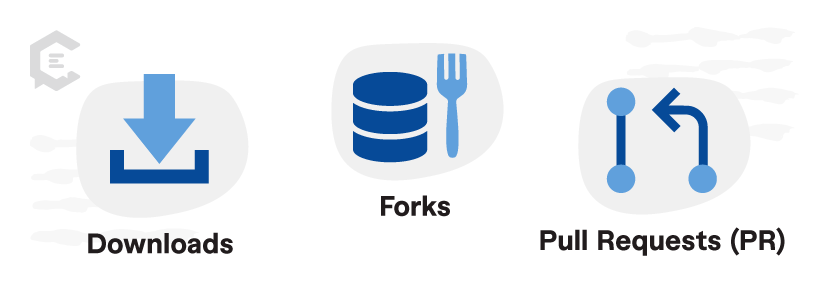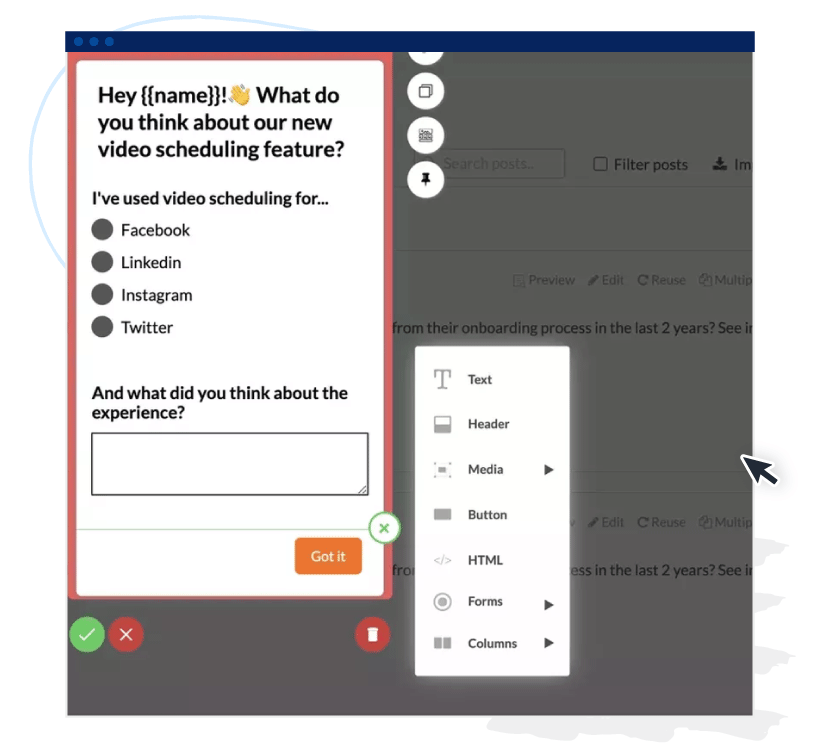Marketing an Open-Source Software (OSS) has unique nuances.
Unlike most traditional technology marketing focusing primarily on business decision-makers, OSS marketing casts a wider net. It also heavily targets developers, vendors, and end-users who are crucial to the adoption and advocacy of the technology.
In this space, your content needs to resonate with the open-source community. It should not only demonstrate how your software can seamlessly integrate into their existing systems and business dynamics but also reflect the collaborative spirit of open-source software. Otherwise, your OSS marketing initiatives will fail to gain traction.
In this comprehensive guide, we’ll cover everything you need to know to effectively handle challenges and capitalize on opportunities within the open-source landscape to ensure your success.
The Value of Community
Open-source projects flourish under the collaboration and contributions of a community of developers, enthusiasts, vendors, and end-users.
That community is a prime resource to help shape and inform your promotion strategies. Their reliable feedback and insights, based on actual experience, will help you tailor your content to better resonate with your target audience through relatable and relevant real-world use cases.
In addition, building a presence in open-source software communities can attract developers and hobbyists to your project. Enlisting their help also brings more exposure as they share details of their progress via social media, expanding the visibility of your project.
Understanding the open-source community and the tech and SaaS industry also helps you spot pain points, trends, and other challenges that help make your software content marketing efforts more compelling.
Here are some of the top open-source communities you should consider:
- GitHub
- Stack Overflow
- CodeProject
- Reddit r/opensource
- OpenSource.org
Balancing Technical and Non-Technical Content
In OSS marketing, including a healthy mix of technical and non-technical content is important. However, that content must be tailored to your audience’s level of technical knowledge and language.
The beauty of the mix between technical and non-technical content is it allows you to offer a wider range of value and reach a more diverse and broader audience.
Technical content lets you appeal to developers and business decision-makers (just make sure you use specialist technical writers). Conversely, non-technical content provides value to end-users or new developers who want to better understand how certain software features work.
Incorporating non-technical content in OSS marketing also helps:
- Simplify complex technical terms and concepts like MySQL and Open Document Format
- Introduce the technology to potential, non-technical customers who need similar solutions
- Ramp up the generation of testimonials and case studies, encouraging more users to try your open-source software
- Increase social media engagement and shares to raise awareness and boost demand
- Target high-traffic, non-technical keywords and generate organic traffic through SEO content writing
Amplifying Project Visibility: Top Content Strategies
According to data, 72% of marketers say content marketing helps educate target audiences. As long as you create content that educates audiences based on their segment.
For example, share open-source software-focused content with other developers such as:
- Tutorials on running data repository backups
- Essential, unique coding features that make your project work
- Special tools, technologies, and techniques you use for development
- Webinars on the essentials of open-source license compliance
- Workshops on shifting from virtualization and cloud computing software to open-source software
For end-users and other non-developers, discuss the front-end side of your project. Some areas to cover are UI design, quality-of-life features, and how to utilize them.
Keep in mind that creating high-value content takes a lot of time. Outsourcing your B2B SaaS content creation might be your best answer if you’re struggling with bandwidth. For example, here at ClearVoice, our Talent Network includes everything from technical writers to graphic designers. We love creating the content you need, when you need it so you’re free to focus on higher-level tasks.
Case studies and real-world implementations
A great way to showcase your open-source project and connect with your target audience (besides crafting compelling narratives) is through concrete examples. Sharing real-world implementations of how your software’s been successfully used helps your audience see your software’s tangible value and benefits.
Case studies are particularly helpful because they highlight how your software has solved real problems, which offers insights into practical applications it can bring to users.
If your project is in early development, showcase individual features alongside tips and step-by-step tutorials. It not only educates potential users, it also engages them with interactive content that enhances their understanding and appreciation of your project. Also, consider sharing features or development updates via blog posts, animations, or short-form videos.
Leveraging user-generated content and testimonials
Another great strategy is to let other satisfied users speak for your software’s value and effectiveness.
Share User-generated content (UGC) and testimonials from users with first-hand experience using and loving your software.
UGC can prove your software’s value and credibility while getting more people to discuss your open-source project, expanding its visibility and reach.
Other user-generated content for open-source software marketing are:
- Social media videos and “stories” of people using your software
- Reviews of your open-source software published on another website
- Comments and responses to threads on social media and forums
- Positive social media posts that mention your project
- Video tutorials posted by users
Fostering Collaboration and Community Engagement
Community plays a vital role in marketing and promoting your open-source project. Below are tactics to drive up community engagement and spread the word on your open-source project:
Spotlighting contributors and community achievements
Highlight your software’s top contributors and celebrate community achievements to show appreciation. Sharing that recognition boosts your company’s morale and rewards and encourages the people already working hard on your team. It also motivates other people to participate and contribute.
Bottom line, if you want a healthy content ecosystem, you want a supportive, positive community environment that demonstrates the effectiveness of collaboration. Newsletters, social media shout-outs, and dedicated sections on your website are all great ways to do this.
Hosting interactive AMAs, Forums, and Q&A Sessions
To provide value and help your open-source community learn and grow, you need to lead the way. Share your knowledge by:
- Hosting interactive Ask Me Anything (AMA) sessions. It’s an opportunity to hear from your community, share know-how, and spread insider tips about your software.
- Running forums where developers, users, and enthusiasts can freely ask questions and discuss topics related to your project. For instance, users can share the automated backup solution they use to back up their codes and repositories.
- Holding live Q&A sessions to answer your community members’ burning questions. Live videos enable you to engage viewers in real-time, while Twitter and forum Q&As increase the session’s accessibility and duration.
Collaborative content creation: wikis, docs, and contribution guides
A collaborative content library allows your community to contribute and get reliable resources. This includes wikis, comprehensive documentation, and contribution guides for your community contributors.
Contribution guidelines foster a culture of collaboration and keep contributors on the same page regarding development progress and terminology.
Below are a few tips to help you create effective contribution guidelines:
- Target new contributors. Model your guidelines around new contributors who don’t have prior knowledge of your open-source project.
- Express your gratitude. Open-source contributions are made out of passion — be sure to share your appreciation with everybody who chips in.
- Share valuable resources. Create a list of useful resources that equip contributors with tools and knowledge specifically for your project.
- Invite contributors to a private communication channel. Bring contributors to a direct channel via Slack, Discord, or other similar platform to streamline communication.
And if managing your content production gets too much, consider working with reliable providers for seamlessly managed content creation.
Tracking the Success: Metrics and Feedback Loops
Track the following engagement metrics to measure success:
- Downloads. Monitoring downloads tells you the total number of times users downloaded your software from your distribution channels. The metric helps you determine your open-source project’s overall reach and popularity and the effectiveness of your content marketing efforts. Get help from agencies to manage your content distribution and marketing channels.
- Forks. The Forks metric shows how often other developers or users forked your open-source software project’s original repository. It allows you to assess your software’s engagement, popularity, and interest.
- Pull Requests (PR). A PR is a request from a contributor to merge changes, such as modifications and code additions, into your project’s main codebase. The PR metric helps you determine your software project’s community participation, contribution quality, and health.
Community feedback and surveys
Feedback and surveys help you get a pulse on the following:
- User needs and pain points
- Frontend suggestions from end-users
- Discovered bugs, errors, and other back-end issues
- Development priorities or the most critical issues you must address
- How users perceive your software, including your marketing message
- Trends and emerging needs in your market
- Gaps, improvement opportunities, and suggestions from contributors
Use online surveys and feedback tools like Userpilot to engage your community and democratize decision-making.
Image source: UserPilot
Long-term growth and contributor metrics
Key contributors and long-term growth metrics include:
- Active contributors or the number of project contributors, indicating its community engagement and effectiveness of your contributor retention strategies.
- Contribution frequency tells how often users contribute documentation updates, bug fixes, or new codes to your project. Tracking this metric is also useful in showing recognition to your most active contributors.
- User growth tells you the number of installations or recent users of your software project over a certain period. This metric is directly tied to your project’s popularity, potential, and market readiness.
Cultivating a Thriving Open-Source Project through Content Marketing
Any open-source project needs an engaged and thriving community to succeed. Community-driven content marketing leads to higher engagement, collaboration, and adoption. However, it’s easier said than done.
Promoting and marketing your open-source software takes a lot of work and resources. Consider working with a reliable content marketing agency to save time while producing excellent results. Reach out to ClearVoice today to see how we can level up your content marketing strategies for open-source software.








